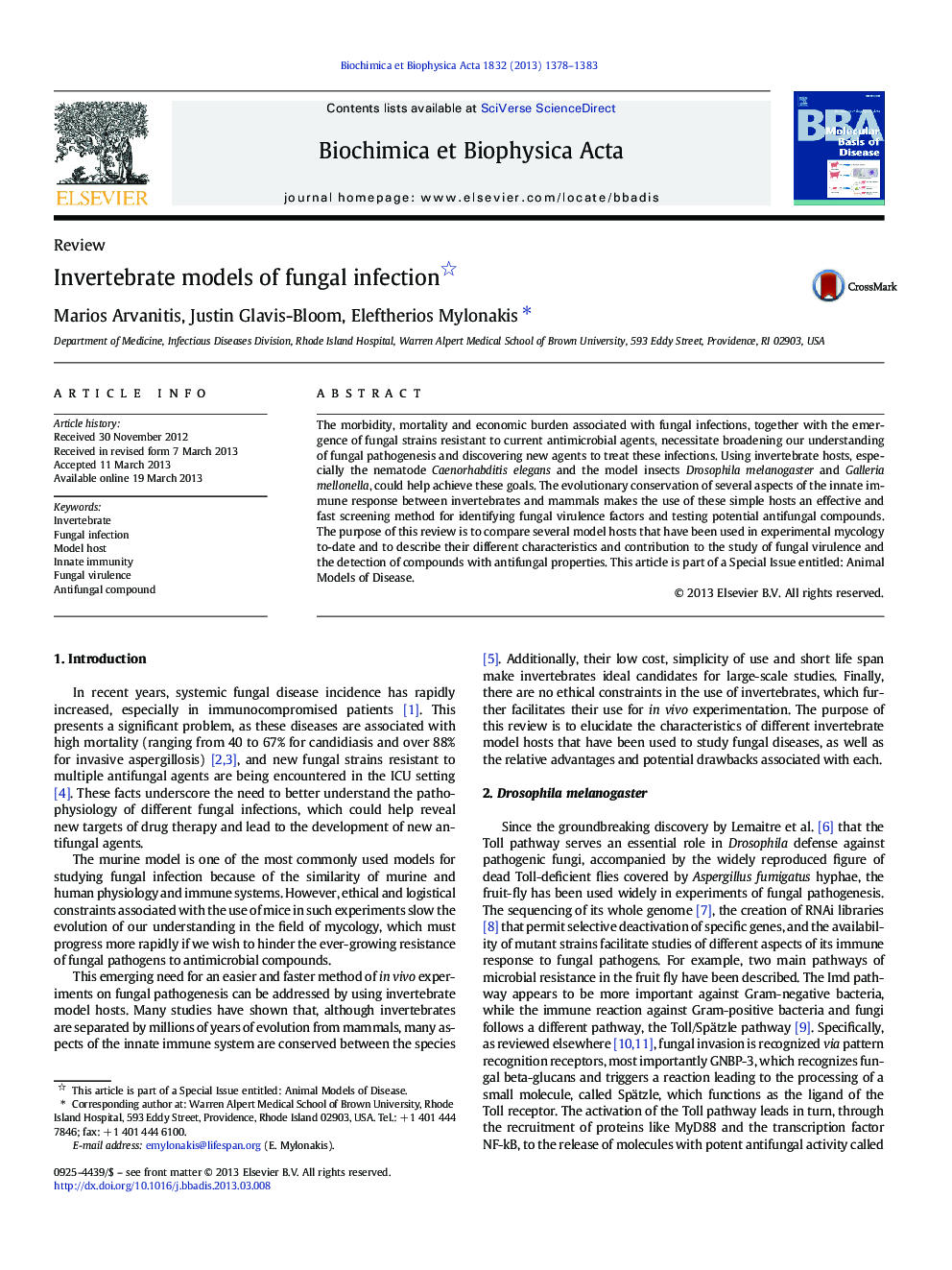| Article ID | Journal | Published Year | Pages | File Type |
|---|---|---|---|---|
| 1904831 | Biochimica et Biophysica Acta (BBA) - Molecular Basis of Disease | 2013 | 6 Pages |
•Several invertebrate hosts have been used to-date to study fungal infections.•These model hosts can help in the discovery of new antifungal agents.•They can also help identify aspects of the innate immune response to pathogens.•We aim to present their characteristics and their relative differences.•We focus mostly on Drosophila, Caenorhabditis and Galleria.
The morbidity, mortality and economic burden associated with fungal infections, together with the emergence of fungal strains resistant to current antimicrobial agents, necessitate broadening our understanding of fungal pathogenesis and discovering new agents to treat these infections. Using invertebrate hosts, especially the nematode Caenorhabditis elegans and the model insects Drosophila melanogaster and Galleria mellonella, could help achieve these goals. The evolutionary conservation of several aspects of the innate immune response between invertebrates and mammals makes the use of these simple hosts an effective and fast screening method for identifying fungal virulence factors and testing potential antifungal compounds. The purpose of this review is to compare several model hosts that have been used in experimental mycology to-date and to describe their different characteristics and contribution to the study of fungal virulence and the detection of compounds with antifungal properties. This article is part of a Special Issue entitled: Animal Models of Disease.
